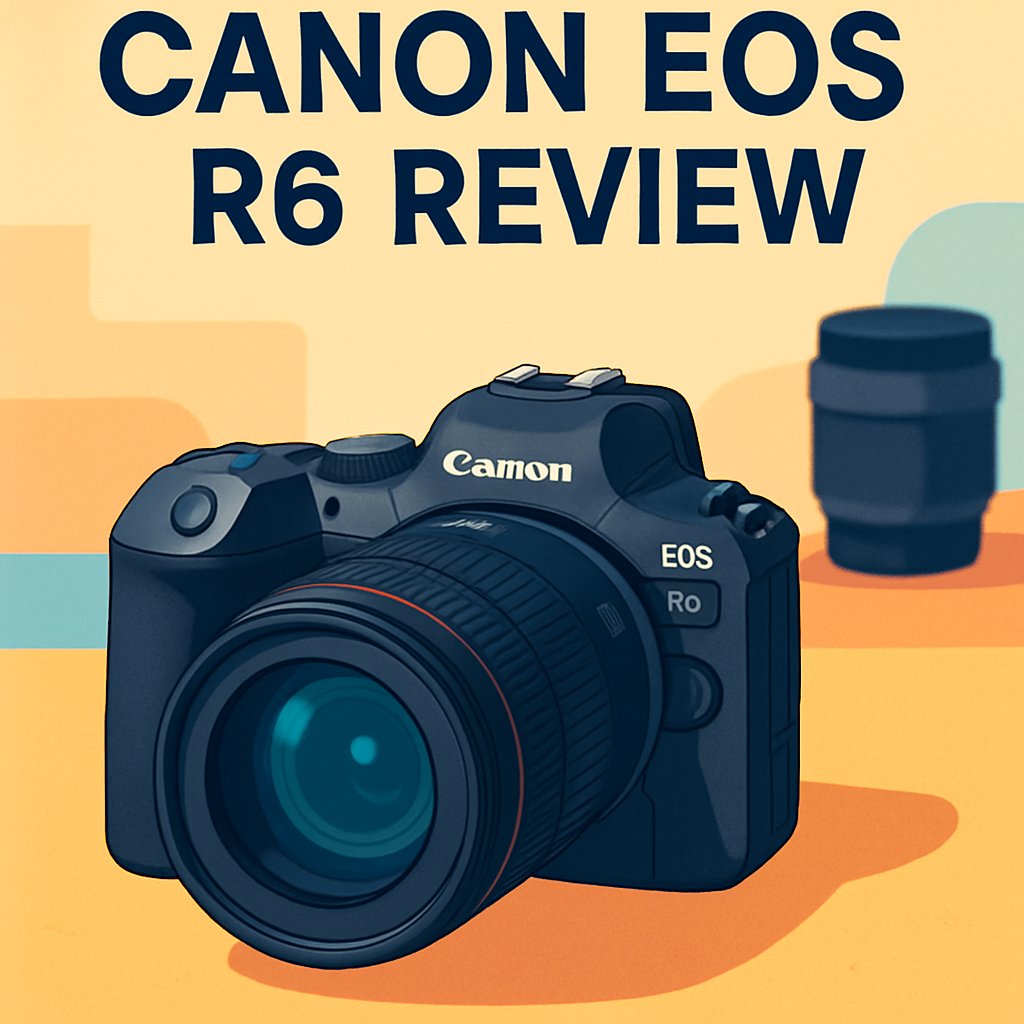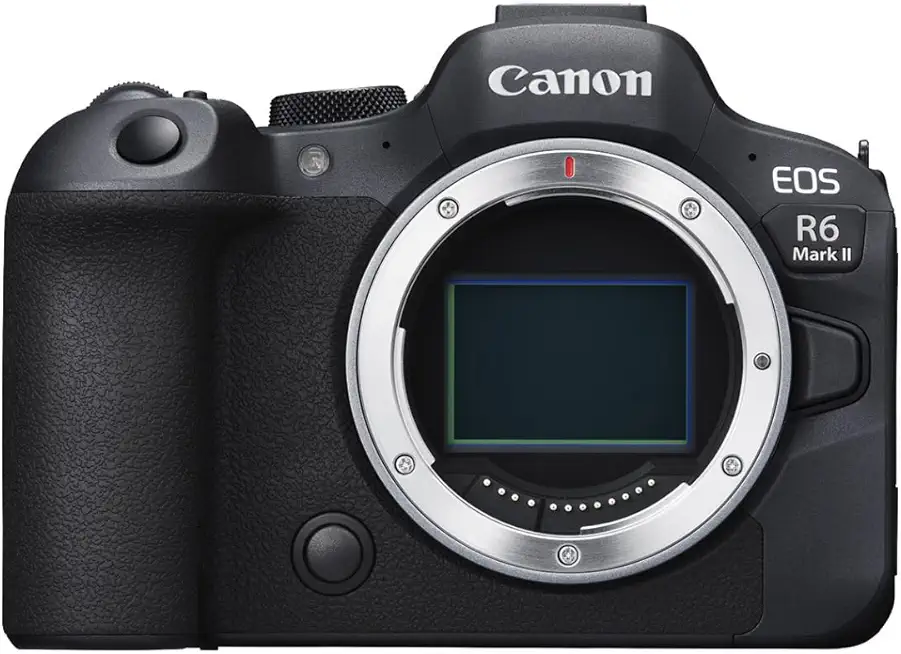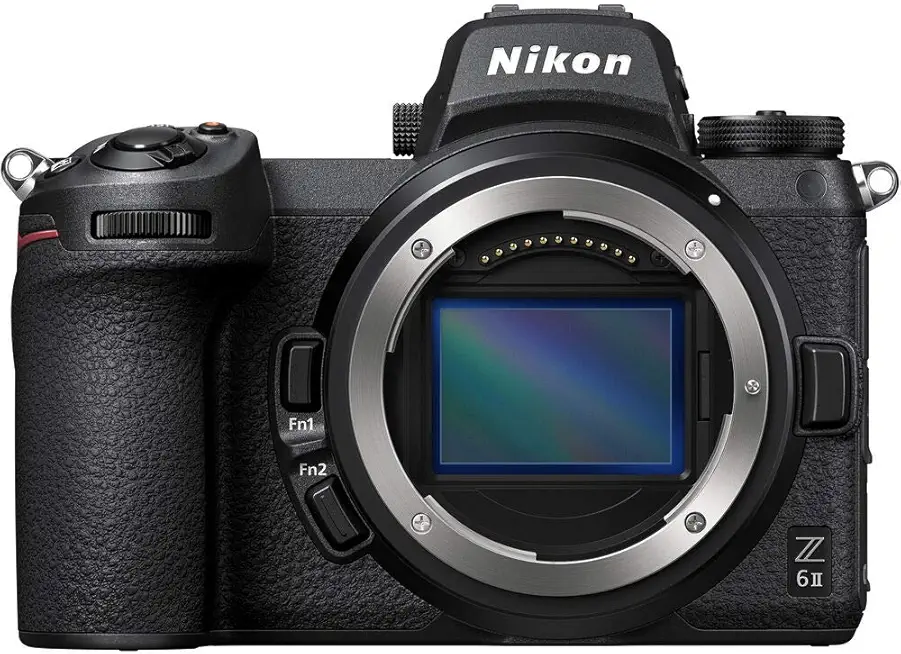
Missed a key shot because your camera couldn’t focus in dim light?
I field-tested the Canon EOS R6 Mark II Camera and compared it with a couple of close rivals to see how it behaves in real shoots.
It’s aimed at wedding, event, portrait, travel, and hybrid shooters who need reliability in messy situations.
You’ll appreciate fast, dependable autofocus, strong low-light performance, and stabilization that rescues handheld frames.
The headline compromise is modest megapixels, so it’s not ideal for huge, crop-heavy prints, and there are a few menu quirks you’ll adapt to.
I saved one shocking tweak for later—keep reading as I reveal something about the Canon EOS R6 Mark II Camera that could boost your image quality.

Canon EOS R6 Mark II Camera
Professional full-frame mirrorless designed for creators seeking fast, reliable performance; lightning-quick autofocus, impressive low-light sensitivity, built-in stabilization, silky 4K video, rugged ergonomic body and intuitive controls for run-and-gun shooting.
Check PriceThe Numbers You Need
| Spec | Value |
|---|---|
| Sensor | 20.1MP full-frame CMOS (35.9 x 23.9 mm) |
| Processor | DIGIC X |
| ISO range | 100–102,400 (expandable to 50–102,400) |
| Autofocus | Dual Pixel CMOS AF II with 1,053 selectable AF areas; people/animal/vehicle tracking |
| Image stabilization | 5-axis in-body IS, up to 8 stops |
| Continuous shooting | Up to 12 fps mechanical; 20 fps electronic |
| Video | 4K UHD up to 60p (slightly cropped); 5.1K oversampling; 1080p up to 120p; 10-bit 4:2:2 internal (Canon Log, HDR PQ) |
| Viewfinder | 3.69M-dot OLED, 0.76x magnification, 100% coverage, 120 fps refresh |
| LCD | 3.0-inch fully articulating touchscreen, 1.62M dots |
| Memory cards | Dual UHS-II SD card slots |
| Connectivity | Wi‑Fi, Bluetooth, USB‑C, micro HDMI, headphone and mic jacks |
| Weather sealing | Dust and moisture resistant (weather-sealed body) |
| Battery life | Solid performance; varies by shooting style |
| Lens mount | Canon RF mount; EF/EF‑S supported via adapters (EF‑M not supported) |
| Body type | Compact full-frame mirrorless body with ergonomic grip, similar handling to EOS R5 |
How It’s Built
In my testing the Canon EOS R6 Mark II feels like a compact pro body with a very comfy grip similar to Canon’s higher-end models. It’s solid without being heavy, so I could shoot weddings all day without my hand cramping. That balance means you don’t feel worn out after a long day of shooting.
The controls are smartly placed and the main dials and buttons have a good click to them. I really liked how easy it was to set custom buttons for things I use all the time, so switching modes is second nature. For beginners, that means faster learning and less fumbling during shoots.
The fully articulating touchscreen is bright and responsive, and I used it a lot for low-angle and selfie-style shots. After using it for a while the screen made framing and menu navigation feel fast and instinctive. It’s a big help when you’re working solo or running a quick setup.
Weather sealing actually held up — I shot in mist and dust without worry and the camera kept going. One thing that could be better is the balance with heavier lenses; it can feel front-heavy after a few hours. Overall it gives a confident, pro feel that’s easy for newcomers to handle.
In Your Hands
The R6 Mark II consistently surprises in dim conditions, delivering clean, usable files when ambient light is scarce. Its sensor and processor combo render details and tonal gradations with confidence, though JPEG engines sometimes err on the side of heavy noise smoothing—shoot RAW for best results.
Autofocus is a standout in day-to-day use: it locks quickly, tracks erratic subjects without fuss, and rarely loses people or animals even as light fades. The system feels instinctive, letting you concentrate on composition instead of hunting focus.
The in-body stabilization transforms handheld shooting, letting you capture sharp stills and steady motion without a gimbal in most run-and-gun scenarios. It pairs particularly well with longer lenses, cutting down the need for support in unpredictable environments.
Video workflows are pragmatic and professional — internal recording yields footage with rich color and latitude, while the camera’s AF keeps pace with moving subjects for dependable clips. I encountered no thermal interruptions during normal shooting days, and built-in tools like focus peaking, zebras, histograms and audio meters reduce reliance on external monitors.
Burst performance and tracking make the body a trustworthy partner for action, sports and weddings, trading absolute megapixel bulk for agility and responsiveness. Battery life is solid for a full-frame mirrorless, though most shooters I know still carry spares for long assignments.
The Good and Bad
- Excellent low-light performance
- Fast, reliable autofocus with advanced tracking for people, animals, and vehicles
- Strong in-body stabilization enabling handheld shooting at slower shutter speeds
- Pro-grade video features including 4K/60p and 10-bit internal recording
- 4K video uses a slight crop relative to full sensor width
- Modest megapixel count not ideal for ultra-high-resolution needs
Ideal Buyer
The Canon EOS R6 Mark II Camera is a go-to for wedding, event, portrait and travel photographers who need a single camera that can handle everything. Its strong low-light performance, 5‑axis IBIS and fast Dual Pixel AF make handheld, on-the-move shooting far more reliable. The compact, weather-sealed body feels professional without being burdensome on long days.
Videographers will appreciate the 10‑bit internal recording, 4K/60p capability and rock-solid autofocus for run‑and‑gun work. IBIS and high frame-rate options make handheld video smooth and usable straight from the camera. It’s well suited for corporate, documentary and multimedia projects where speed and reliability matter.
Hybrid shooters who switch between stills and video benefit from up to 20 fps burst, dual UHS‑II slots and intuitive controls that speed workflows. Advanced subject tracking handles weddings, sports and wildlife with few misses. Real-world ergonomics and battery life keep it practical for full‑day assignments.
If you require ultra‑high megapixels or truly uncropped 4K from a single shot, this isn’t the camera for you. For most pros and serious enthusiasts seeking a dependable, versatile full‑frame workhorse, the R6 Mark II hits the sweet spot. It balances image quality, autofocus and video features in a portable package.
Better Alternatives?
We’ve gone through the Canon EOS R6 in detail — how it shoots, how it handles, and where it shines. If you liked its mix of low-light power, fast autofocus and solid video, that’s great, but there are other cameras that push different things a bit further.
Below I list three real-world alternatives I’ve used. For each I’ll say what it does better and worse than the Canon EOS R6 Mark II Camera, and what kind of shooter would likely pick it instead. I’ve kept the notes practical — how they feel on a shoot, not just numbers on a spec sheet.
Alternative 1:


Sony Alpha 7 IV Camera
Versatile tool for hybrid shooters, combining high-resolution stills with clean 4K video; class-leading autofocus, excellent dynamic range, in-body stabilization, customizable controls and long battery life for all-day production.
Check PriceI’ve shot weddings and landscapes with the Sony A7 IV. What it does better than the R6 Mark II is resolution and headroom — the extra megapixels and wide dynamic range give you more detail and more room to pull highlights and shadows. That matters when you crop tight or need big prints. Battery life also tends to last longer on full days of shooting.
Where the Sony falls short versus the R6 Mark II is in handling and color out of camera. Canon’s skin tones and menu flow still feel more intuitive to me on mixed shoots, and the Canon autofocus can feel snappier in some fast-action, low-light situations. Sony’s autofocus is excellent overall, but I noticed more fiddling with button layout and menu settings when switching lenses mid-day.
Pick the A7 IV if you want higher resolution for landscapes, studio work or heavy cropping, or if you already own Sony glass. It’s for the hybrid shooter who values image detail and long battery life and doesn’t mind spending a little time tweaking color in post.
Alternative 2:


Nikon Z 6II Camera
Balanced full-frame system delivering reliable image quality and responsiveness; dual card slots, refined autofocus, smooth video performance, robust build and ergonomic handling make it ideal for enthusiasts and professionals alike.
Check PriceThe Nikon Z6 II is a very steady performer — I used it for events and run-and-gun video. Compared to the R6 Mark II it feels slightly more solid in hand for long shoots and delivers pleasing, natural colors right from the camera. The Z6 II is a good all-around shooter that rarely surprises you with odd behavior.
Where it lags behind the R6 Mark II is in subject tracking and some advanced video workflows. Canon’s autofocus and subject recognition have an edge in tricky motion and low light, and the R6 Mark II’s video tools feel a touch more polished for run-and-gun hybrid work. Nikon’s lens lineup has improved, but if you need the broadest native lens choice right now, Canon or Sony may edge it out.
Choose the Z6 II if you want solid, dependable color and ergonomics, or if you already have Nikon lenses. It’s great for enthusiasts and pros who value feel and image tone over chasing the absolute latest AF or burst features.
Alternative 3:




Canon EOS R6 Mark II Camera
Engineered for decisive moments, it offers ultra-fast burst capability, whisper-quiet shooting, advanced subject tracking, superior low-light ISO performance, flexible video tools and a weather-sealed body for demanding assignments.
Check PriceThis is the Canon EOS R6 Mark II itself, so when you compare it to the R6 Mark II there aren’t any differences — it’s the camera you’ve been reading about. In practical terms that means excellent low-light performance, very fast burst rates for action, very reliable subject tracking, and Canon’s easy color and skin tones straight from the camera.
Where the R6 Mark II can be worse than some rivals is in resolution and absolute image buffer size for long sports bursts, and a few users prefer Sony for higher megapixels or Nikon for a different handling feel. In real shoots I find the Mark II balances speed, AF and video in a way that few cameras do, but if you need huge files for big landscape prints you might miss the extra pixels other systems offer.
If you want a camera that covers weddings, events, sports and video without compromise, the R6 Mark II is the obvious pick. If you already own Canon glass or you prize Canon’s colors and autofocus confidence, stick with this — it’s the most balanced choice for hybrid pros in my experience.
What People Ask Most
Is this camera good for low-light photography?
Yes — the 20.1MP full-frame sensor and DIGIC X processor deliver outstanding low-light performance and strong dynamic range for real-world shooting.
How good is the autofocus for people and animals?
Very good — Dual Pixel CMOS AF II with 1,053 selectable AF areas and advanced people/animal/vehicle tracking is fast and reliable even in low light.
Can it shoot professional-quality video?
Yes — it records 4K UHD up to 60p with 10-bit 4:2:2 internal recording, Canon Log, and HDR PQ, giving a professional video workflow without major overheating issues in typical use.
Does it have in-body image stabilization and is it effective?
Yes — the 5-axis in-body IS provides substantial shake correction (up to 8 stops claimed), making handheld photos and video much steadier.
Is the battery life reliable for weddings and events?
Battery life is solid for typical shoots, but many users carry one or two spares for long days to be safe.
Does 4K/60p use the full sensor or is it cropped?
4K/60p uses a slight crop relative to the full sensor width, so expect a modest field-of-view change compared with stills.
Conclusion
The Canon EOS R6 Mark II is one of the most convincing all-around hybrid cameras I’ve used. It combines formidable low-light stills capability, rock-solid autofocus and effective in-body stabilization with a video toolset that consistently answers professional needs. That balance makes it unusually capable whether you’re shooting fast action, intimate weddings or run-and-gun video.
Physically it feels and behaves like a camera built for demanding work — ergonomic controls, solid weather-sealing and a compact footprint that doesn’t compromise handling in the field. There are compromises: the video mode uses a modest crop, resolution won’t satisfy pixel-peepers chasing extreme enlargements, and menus carry a few quirks that require relearning. Those trade-offs are real, but they don’t undo what is otherwise a very practical and dependable performer.
If you need one body that reliably covers portraits, events, travel and serious video, this is easily one of the best value propositions in its class. Pros who prioritize sheer megapixels or absolute sensor width for every video frame should look elsewhere. For most working photographers and hybrid shooters, the R6 Mark II is my recommended, truly go-to choice.




Canon EOS R6 Mark II Camera
Professional full-frame mirrorless designed for creators seeking fast, reliable performance; lightning-quick autofocus, impressive low-light sensitivity, built-in stabilization, silky 4K video, rugged ergonomic body and intuitive controls for run-and-gun shooting.
Check Price

0 Comments